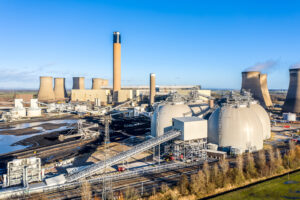“Drax remains UK’s largest emitter amid biomass subsidy controversy”

The document states that emissions from Drax increased by 16% last year, further widening the gap between it and the country’s next largest emitters, with Drax’s emissions exceeding those of the six largest gas power plants combined.
The report highlights that, despite Pembroke gas power station ranking as the UK’s third largest emitter, Drax’s biomass power plant has held the top emitter position for 10 consecutive years.
Emissions from Drax are described as equivalent to more than 10% of the UK’s total transport emissions, with the plant generating 15 TWh in 2024 by burning 7.6 million tonnes of wood - 99% of which was imported.
Following the UK’s coal phase-out in 2024, including the closure of the Ratcliffe-on-Soar coal power plant and Port Talbot Steelworks ceasing operations in September 2024, emitter rankings have shifted.
However, according to Ember, power plants - particularly biomass and gas - will continue to dominate the emissions landscape until they too are phased down.
The report emphasises concerns regarding the high level of direct emissions from large-scale biomass burning, especially considering that Drax reportedly earned around £2 million per day in public subsidies.
Despite these emissions, biomass generation remains classified as carbon-neutral under current UK carbon budgets, allowing it to receive renewable energy subsidies. Ember says that the assumed carbon savings from biomass power are “far from guaranteed.”
Looking ahead, the report states that, despite an announced subsidy cut for biomass starting in 2027, Drax is likely to remain the UK’s largest emitter through to 2030.
The UK government’s decision in February 2025 to reduce biomass subsidies by roughly half after April 2027 is described as the beginning of a long-term phase-out.
Under the new scheme, Drax’s generation is expected to fall to about half current levels, contributing less than 2% of the UK’s forecast electricity supply in 2030.
Nonetheless, the document argues that public subsidies will still likely keep Drax at the top of the emissions rankings, as it produces more than three times the emissions of the next largest operational emitter, Pembroke gas power station.
It also notes that while the government’s Clean Power 2030 target aims to reduce gas power’s share to 5%, biomass and gas are still identified as the largest contributors to power sector emissions.
Regarding carbon capture and storage (CCS), the report highlights a lack of progress in deploying bioenergy with carbon capture and storage (BECCS) technology at Drax.
Neither Drax nor Lynemouth biomass power stations are included in current government CCS initiatives or recent funding announcements.
Ember suggests that delivering BECCS at scale will require significant public investment, raising questions about carbon savings and timelines.

















